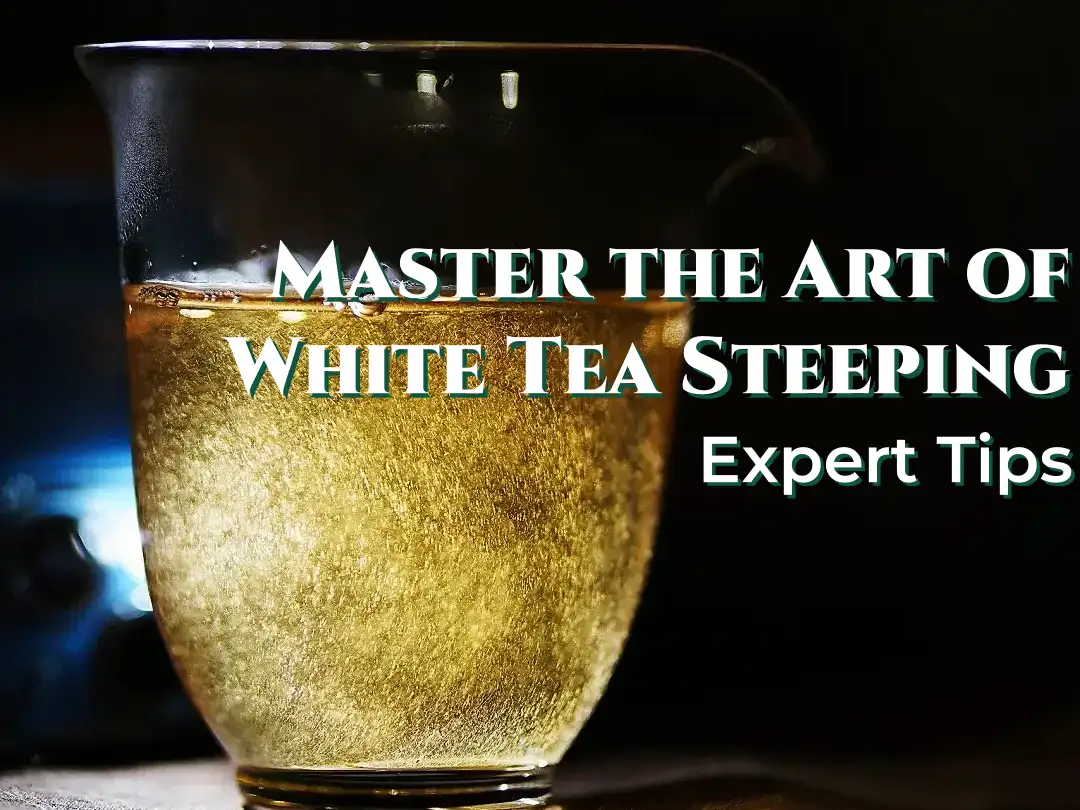White tea, known for its delicate flavor and numerous health benefits, is a favorite among tea connoisseurs and casual drinkers. However, to truly appreciate its subtle nuances, it’s crucial to understand the proper steeping techniques. This comprehensive guide will explore the art of steeping white tea, focusing on popular varieties like White Peony and Shou Mei.
Grasping White Tea: A Gentle Giant in the Tea World
Before diving into steeping times, let’s take a moment to appreciate the unique characteristics of white tea. Originating from the Camellia sinensis plant, white tea undergoes minimal processing, resulting in a light, refreshing beverage packed with antioxidants.
White tea derives its name from the silvery-white hairs on the unopened buds of the tea plant. These buds and select young leaves are harvested and quickly dried to prevent oxidation. This gentle processing preserves the tea’s natural flavors and beneficial compounds, making it a prized choice among health-conscious tea drinkers.
Two popular varieties of white tea are White Peony (Bai Mu Dan) and Shou Mei. White Peony is made from young buds and the two newest leaves on the shoot, resulting in a slightly stronger flavor than other white teas. On the other hand, Shou Mei is crafted from mature leaves and has a fuller body and a more robust taste.
The Art of Steeping White Tea: Finding the Perfect Balance
Steeping white tea is an art that requires attention to detail and a bit of experimentation. The goal is to extract the tea’s delicate flavors without introducing bitterness or astringency. Several factors influence the steeping process, including water temperature, steeping time, and the quality of the tea leaves.
Water temperature plays a crucial role in steeping white tea. White tea prefers a gentler approach than black or oolong teas, which can withstand boiling water. The ideal water temperature for white tea typically ranges from 160°F to 185°F (71°C to 85°C). Using too hot water can scorch the leaves and taste bitter.
As for steeping time, white tea is generally more forgiving than other tea varieties. However, finding the sweet spot is key to unlocking its full potential. The recommended steeping time for white tea can vary depending on personal preference and the specific type of white tea you’re brewing.
For White Peony, a steeping time of 4 to 5 minutes often yields excellent results. This allows enough time for the tea to release its flavors without becoming overly strong. With its more mature leaves, Shou Mei can handle slightly longer steeping times, typically between 5 to 7 minutes.
It’s worth noting that these are general guidelines, and you may need to adjust based on your personal taste preferences. Some tea enthusiasts enjoy a lighter brew and may opt for shorter steeping times, while others prefer a more potent infusion and might extend the steeping duration.
Mastering the White Tea Steeping Process: Tips and Tricks
To help you achieve the perfect cup of white tea, here are some additional tips to enhance your steeping experience:
- Use high-quality water: The quality of your water plays a crucial role in the taste of your tea. Ideally, opt for filtered or spring water. Tap water, especially if it’s heavily chlorinated or hard, can affect the flavor profile, dulling the subtle notes of white tea. Fresh, clean water will help bring out the best in your tea.
- Pre-warm your teaware: Rinse your tea leaf or cup with hot water before adding your tea leaves. This simple step helps maintain a consistent temperature throughout the steeping process, ensuring the tea brews evenly and thoroughly. It also prevents the sudden temperature drop when you pour hot water over the leaves, which can affect the steeping process.
- Measure your tea carefully: Use about 2 grams of white tea leaves per 8 ounces (240 ml) of water for the best balance. This ratio can be adjusted based on your preference for a stronger or lighter tea. Too many leaves can make the tea bitter, while too few can result in a weak brew. Experiment with different amounts until you find the ideal strength.
- Allow room for the leaves to expand: White tea leaves are large and need space to unfurl fully. Use a large infuser or let the leaves float freely in your teapot. This ensures they can release their delicate flavors and aromas without being cramped.
- Experiment with multiple infusions: High-quality white teas, like silver needle or white peony, often yield numerous infusions. Each step will reveal new layers of flavor, so don’t hesitate to re-steep your leaves. For subsequent infusions, increase the steeping time slightly to extract the full range of flavors.
- Pay attention to storage: To preserve the freshness and delicate flavors of white tea, store it in an airtight container, away from light, heat, and strong odors. This will prevent the tea from losing its natural aroma and taste over time.
- Trust your senses: While steeping times and temperatures offer a helpful guide, your palate is the best judge. Taste your tea at different intervals to find your ideal strength and flavor profile. Don’t be afraid to experiment; trust your instincts to create the perfect cup of tea.
White tea’s subtle complexity makes it a fascinating beverage to explore. Whether you’re sipping on a delicate White Peony or a more robust Shou Mei, taking the time to master the steeping process will significantly enhance your tea-drinking experience.
Conclusion
The journey of perfecting your white tea brewing technique is as enjoyable as the destination. Each cup offers an opportunity to refine your skills and discover new flavors. So, grab your favorite white tea, follow these guidelines, and embark on a delightful tea adventure.
We serve thousands of satisfied tea enthusiasts in our tea house each year, and we’re excited to share these exceptional teas with tea lovers worldwide at Orientaleaf.com.

References
- Lv, H. P., Zhang, Y. J., Lin, Z., & Liang, Y. R. (2013). Processing and chemical constituents of Pu-erh tea: A review. Food Research International, 53(2), 608-618.
- Zhao, Z. J., Lan, X. Y., Tian, L. L., Liu, Y. L., & Wang, X. C. (2016). Research progress on white tea. Journal of Tea Science, 36(6), 553-564.
- Dai, W., Xie, D., Lu, M., Li, P., Lv, H., Yang, C., … & Lin, Z. (2017). Characterization of white tea metabolome: Comparison against green and black tea by a nontargeted metabolomics approach. Food Research International, 96, 40-45.
- Unachukwu, U. J., Ahmed, S., Kavalier, A., Lyles, J. T., & Kennelly, E. J. (2010). White and green teas (Camellia sinensis var. sinensis): Variation in phenolic, methylxanthine, and antioxidant profiles. Journal of Food Science, 75(6), C541-C548.


